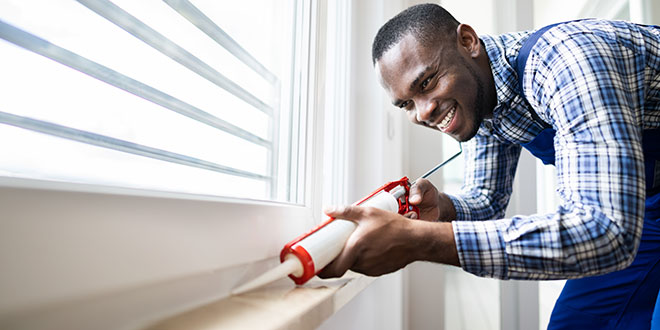According to the U.S. Department of Energy, a minimum of 25 percent of home energy costs come from poorly sealed windows and doors. Heat loss during colder months can result in uncomfortable rooms, increased strain on heating sources such as furnaces and space heaters, and higher bills for the consumer.
No one likes a drafty home, but many times, homeowners are at a loss as to what steps to take to insure their homes are weather-tight. That’s where retailers can step in. By offering a variety of insulating materials—and maybe some advice on the best applications—retailers can help consumers make their homes cozy and energy-efficient. Some products can include:
Weatherstripping: Doors are a common area for air leaks as seals can wear down over time and with constant use. These drafts can be easily remedied through the application of replacement weatherstripping and seals, including under door seals that block significant drafts, like M-D Building Products’ Cinch 36-inch Bottom Door Seal that simply adheres to the door without use of nails or screws.
Window Films: Windows are one of the leading areas of energy loss in a home, and this is especially true for homes that have older windows versus the more updated energy-efficient models. For windows that may need a bit more assistance in keeping out the winter chill, products like plastic shrink insulators can create an additional barrier against the elements. Kits, like Frost King’s new EZ Roll Cylinder Kit, can even come with pre-taped edges, making application easier for the end user.
Caulks, Sealants and Other Insulators: Seals around doors and windows are the only places that can let in winter drafts; the spaces between the home’s structure and those features, if not sealed properly, can allow drafts to seep into the interior of the home. Weatherproof, flexible sealants, such as Dynaflex Ultra Advanced Exterior Sealant by DAP, can bridge the gap between windows, doors and siding, keeping the elements out and the heat in. In other areas, products like electrical outlet insulators can prevent significant heat transfer, especially on exterior walls.
Additionally, some consumers may need extra insulation in attics and walls, or additional heating sources to combat the chill in specific areas of their home that may lack adequate air circulation. Products such as ECOTOUCH® PINK® Fiberglas™ Insulation by Owens Corning, or space heaters like those by Lasko® can be suggested as ways to improve room comfort quality.
 Hardware Retailing The Industry's Source for Insights and Information
Hardware Retailing The Industry's Source for Insights and Information








